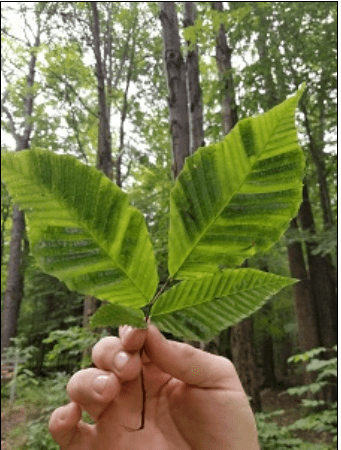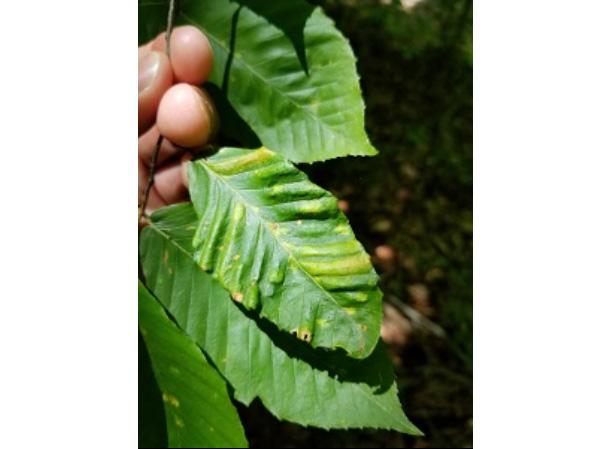
A novel microbe has been making its way across the northeastern U.S., causing beech leaf disease and killing beech trees in its wake. It is not known how this non-native nematode is spreading, though the issue is being studied. The nematode can impact all types of beech trees in the landscape, including our native Maryland species in the forests and non-native beech trees found in some parks and landscapes.
Currently, there is no treatment in place to deal with the issue but research is ongoing.
- Do not move leaves, twigs, soil, branches, seedlings and/or similar materials from infected areas.
- Avoid contacting infected vegetation to prevent spread to other uninfected trees.
- Be on the lookout for any of the symptoms; leaves are best viewed from below the leaf looking upward.
- Look for darkening of the area between leaf veins (striping), leaf curling and leathery appearance.
- Affected leaves will eventually exhibit dead leaf tissue (necrosis), wilting, withering, drying and yellowing.
The Maryland Department of Agriculture has been conducting forest surveys to look for symptoms. As of 2022, beech leaf disease has not been found in Maryland but has been found in adjacent counties in Pennsylvania and Virginia. Contact Maryland Department of Agriculture, Forest Pest unit at 410-841-5870 or email fpm.mda@maryland.gov. This message was brought to you by the forest stewardship educator for University of Maryland Extension.
